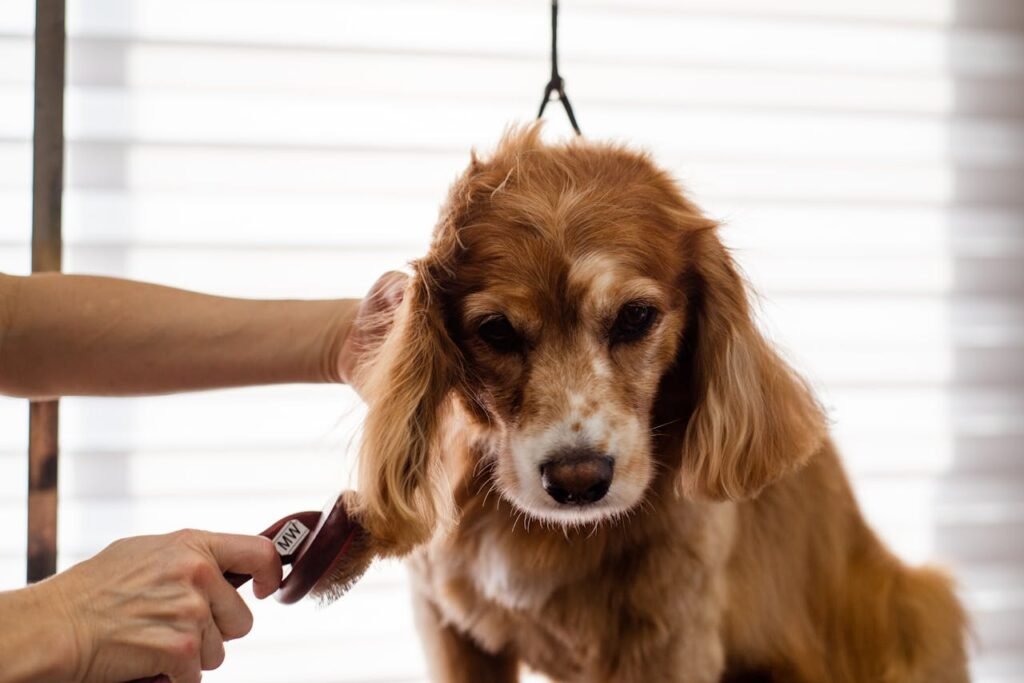5 Signs Your Dog May Have Anxiety. Is your dog acting strange? Discover 5 common signs of anxiety in dogs & learn how To help your furry friend feel calm & happy again.
5 Signs Your Dog May Have Anxiety
Sign 1: Excessive Barking
Barking serves various purposes for dogs. Including alerting owners. Expressing excitement. Or even seeking attention. However. Excessive barking may signal anxiety. If a dog barks more than usual. Exhibiting frantic behavior or distress. Anxiety could be a culprit. Observing barking patterns can help differentiate between normal responses and anxious behavior.
For instance. A dog might bark at every noise outside. Possibly feeling threatened or uneasy. This behavior can cause distress for both dog and owner. Identifying this pattern early ensures appropriate measures can be implemented.
Managing excessive barking requires patience and understanding of triggers causing such behaviors. Training techniques and positive reinforcement can aid in desensitizing a dog. Ultimately reducing anxietyrelated barking.
Sign 2: Destructive Behavior
Dogs often explore their environment through chewing or digging. However. When this behavior escalates into destructive actions. Anxiety may lie beneath. Chewing furniture. Digging up carpets. Or tearing apart belongings typically indicates distress rather than curiosity.
Witnessing a beloved pet engage in destructive behavior can be disheartening. Reflecting on any changes in routine or environment could unveil potential triggers contributing to stress or anxiety. Dogs thrive on routine; disruptions can create confusion and unease.
Providing a safe space for a dog along with stimulating toys can redirect attention away from destructive habits. Engaging in more interactive play might elevate a dog’s mood and reduce frustration leading to anxiety.
Sign 3: Changes in Appetite
Appetite changes often reflect emotional states in dogs. Anxious dogs may refuse food or exhibit excessive eating behaviors. Both of which are concerning. Sudden weight loss or gain can indicate underlying anxiety or stress factors that require attention.
Changes observed during stressful events like thunderstorms or fireworks could be clues signaling anxiety. Recognizing behavioral shifts around specific triggers can assist in determining appropriate responses.
Maintaining a consistent feeding schedule with rewarding experiences can help a dog feel more secure. Consulting a veterinarian for dietary changes may also provide additional support in managing anxiety levels.
Sign 4: Avoidance Behavior
Avoidance behavior represents another significant indicator of anxiety in dogs. When encountering unfamiliar people. Situations. Or sounds. A dog may choose flight over fight. Retreating or hiding instead of engaging. Such responses can manifest through cowering. Tail tucking. Or escaping from stressful environments.
Feeling anxious could result from various factors. Such as past experiences. Trauma. Or even genetics. Identifying areas causing avoidance can help create a safer space. And ensuring gradual exposure aids in increasing comfort levels.
Utilizing calming aids or training techniques can assist dogs in overcoming their fears. Ensuring a friendly and calm environment promotes relaxation and security for anxious pets.
Sign 5: Aggression or Fearful Behavior
Some dogs exhibit anxiety through aggression or fearful behavior. Signs include growling. Snapping. Or retreating when approached. Behavioral changes may arise during instances that provoke fear or discomfort. Recognizing this behavior is essential for prevention and management.
A dog exhibiting aggression or fear may seem unrecognizable compared to its usual demeanor. Past traumatic experiences could contribute greatly. Showcasing why understanding a pet’s history matters. Knowing specific triggers allows owners to create prevention plans.
Training sessions must focus on desensitization. Teaching quiet and calm responses rather than aggressive ones. Behavioral modification techniques supported by trainers or veterinarians can produce effective results. Enabling dogs to regain confidence.
For further reading on treating dog anxiety. Check out this helpful guide.
- 🔍 Excessive barking
- 🧨 Destructive behavior
- 🍲 Changes in appetite
- 🛑 Avoidance behavior
- ⚠️ Aggression or fearful behavior
Sign 6: Pacing and Restlessness
Pacing around an area shows signs of restlessness. Dogs experiencing anxiety find it challenging to settle down. Often becoming fidgety and unable to relax. This behavior can appear similar to signs humans exhibit when feeling stressed or anxious.
Pacing might occur during events that provoke noise or change in environment. Exposure to unfamiliar surroundings may add stress. Compelling dogs to pace until they feel secure again. Encouraging relaxation through comforting presence and familiar items may alleviate distress.
Training approaches that emphasize calmness through gradual exposure assist dogs in connecting relaxation with previously anxious situations. Providing a routine can become beneficial in reducing excessive pacing.
Sign 7: Changes in Sleep Patterns
Sleep patterns often signify wellbeing or anxiety. A dog with anxiety frequently struggles to settle into a restful state. Resulting in disrupted sleep habits. Signs include difficulty settling down. Frequent waking. Or excessive whimpering during sleep.
A dog’s inability to rest properly can exacerbate anxiety. Creating a cycle of distress. Changes in environment or routine may further disrupt sleep patterns. Requiring careful monitoring by owners.
Ensuring a designated sleeping area promotes comfort and security. Creating a calming bedtime routine can help signal to a dog that it’s time for rest. Allowing for improved sleep quality.
| Sign | Description | Possible Solutions |
|---|---|---|
| 🔍 Excessive Barking | Frequent barking may indicate anxiety. | Training and positive reinforcement. |
| 🧨 Destructive Behavior | Pawing at furniture or digging. | Redirecting energy with toys. |
| 🍲 Changes in Appetite | Picky eating or overeating patterns. | Consistent feeding routine. |
| 🛑 Avoidance Behavior | Fear of certain environments or people. | Gradual exposure and positive experiences. |
| ⚠️ Aggression or Fearful Behavior | Unexpected growling or snapping. | Desensitization and training sessions. |
My Personal Experience
Having witnessed signs of anxiety in my own dog. I can share how concerning such experiences can become. Initially. Excessive barking created disturbances. Leading me to investigate underlying causes. Destructive behaviors manifested as well. Prompting significant concern for both my dog’s wellbeing and household harmony.
Through careful observation and changes. I discovered solutions such as creating a calm. Structured environment. Implementing routines alleviated some stress for my furry friend. Allowing us both to enjoy our time together without constant anxiety.
Engaging with trained professionals provided additional insight into addressing specific behaviors. Overall. Understanding signs helped me support my dog. Gradually improving its quality of life.
For more information and resources regarding anxiety in pets. Visit Haven for Pet Care.
Is your dog acting strange? Discover 5 common signs of anxiety in dogs & learn how To help your furry friend feel calm & happy again.

What are common behavioral signs that indicate a dog may have anxiety?
Dogs that are experiencing anxiety may exhibit behaviors such as excessive barking. Destructive chewing. Or pacing. These actions are often their way of coping with stress & discomfort.
How can I tell if my dog is anxious when I’m not home?
If your dog becomes overly vocal or destructive when you leave. It can be a sign of separation anxiety. Other indicators include excessive drooling. House soiling. Or attempts To escape from their designated area.
Are there physical signs that my dog might be anxious?
Yes. Physical symptoms of anxiety in dogs can include tremors. Panting. Hiding. Or having a lowered head & tail. These signs suggest that your dog is feeling stressed & uncomfortable in their environment.
Conclusion
Understanding your dog’s behavior is key To ensuring their happiness. If you notice signs like excessive barking. Shying away. Or changes in eating habits. It might be a sign of anxiety. Don’t ignore these signals; they’re your dog’s way of asking for help. Keeping a calm environment. Sticking To routines, & spending quality time can really make a difference. Remember. Every dog is unique. So pay attention To their needs. Your love & support can help them feel more secure. Trust your instincts, & don’t hesitate To seek professional advice if needed. Your furry friend deserves The best care!


